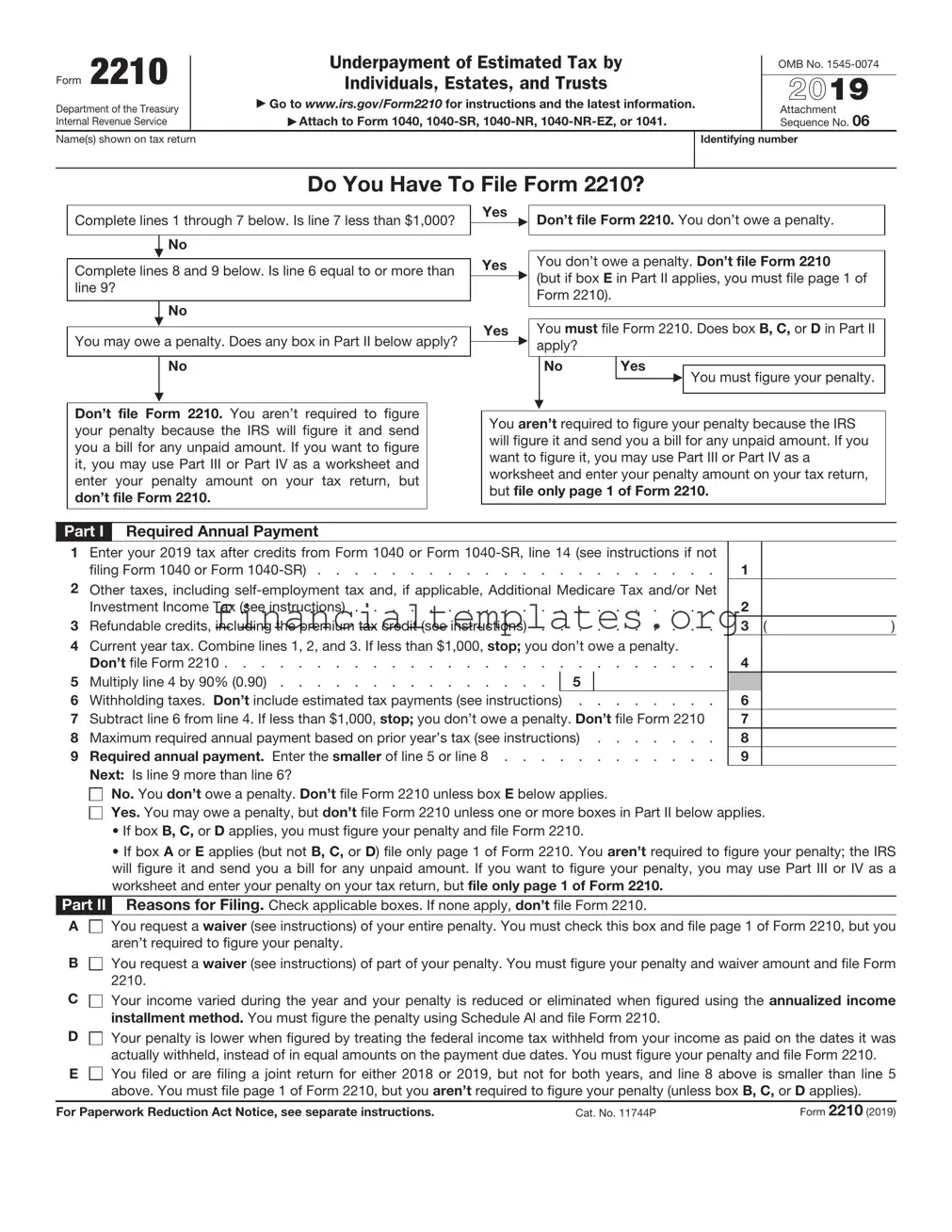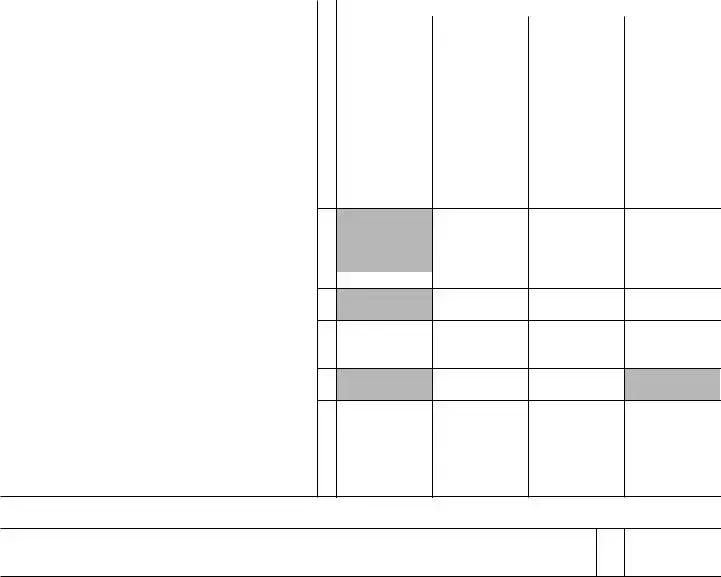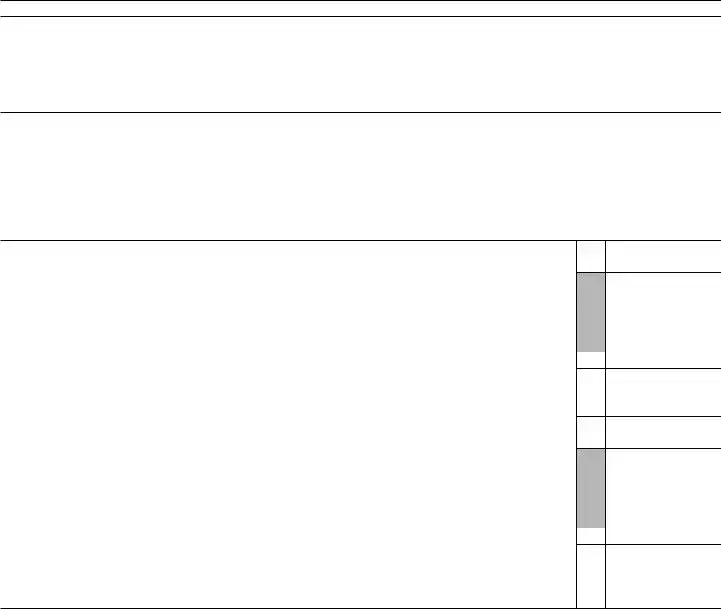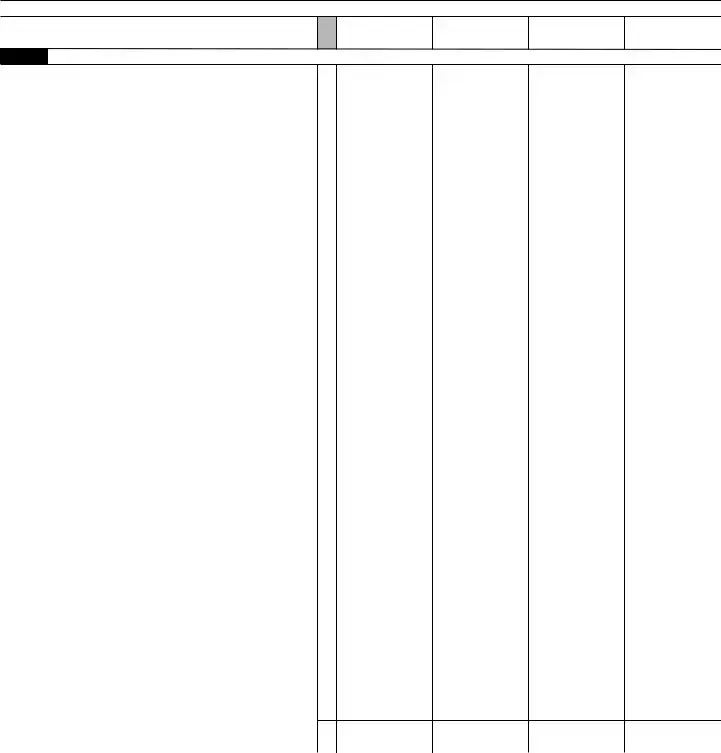The IRS 2210 form, utilized for calculating underpayment of estimated tax by individuals, estates, and trusts, shares similarities with several other tax-related documents. One notable document is the IRS 1040 form, the standard federal income tax form used by individuals. Both forms deal with personal financial information, with the 1040 form serving as the basis for calculating income tax liability. By contrast, the 2210 form addresses specific situations where the tax was not sufficiently withheld throughout the year. Nonetheless, both require meticulous attention to one's income and tax payments.
Similarly, the IRS 1040-ES form, which is used for estimating taxes for the forthcoming year, bears resemblance to the 2210 form. Individuals, including self-employed professionals, use the 1040-ES to calculate and pay estimated taxes quarterly. This proactive approach to tax payments is intricately linked to the 2210's retrospective adjustment of underpaid estimated taxes. Both documents are essential for managing tax obligations efficiently and avoiding potential penalties for underpayment.
The IRS Schedule SE form, necessary for computing self-employment tax, also parallels the 2210 form. Self-employed individuals use Schedule SE to determine the tax owed on their net earnings from self-employment, reflecting an assessment similar to that of the 2210 for underpayment penalties. Although Schedule SE focuses on Social Security and Medicare contributions, both forms are indispensable for individuals with complex income sources ensuring accurate tax contributions.
Another document, the IRS Form 4868, provides an extension for filing income tax returns, indirectly connecting to the 2210 form's concerns with taxation periods. While the 4868 addresses delays in filing, any tax owed is still due by the original deadline, which might necessitate adjustments through Form 2210 if estimated taxes were underpaid. These forms together help taxpayers manage deadlines and payment obligations to avoid undue penalties.
The IRS W-4 form, designed to inform employers about the tax withholding amount from an employee's paycheck, also correlates with Form 2210's purpose. While the W-4 aims to adjust withholdings to prevent underpayment or overpayment of tax, Form 2210 rectifies situations where these adjustments were insufficient. Both forms are vital in the pursuit of balancing tax obligations throughout the fiscal year.
Form W-9, requested by financial institutions and companies paying non-employment income, is another form with a link to Form 2210. It is used for taxpayer identification and certification to inform payers on how much tax to withhold. Where the withholding is insufficient, Form 2210 becomes relevant for addressing any discrepancies in estimated tax payments, emphasizing the importance of accurate withholding information.
The IRS Form 1099-MISC, reporting miscellaneous income, is an essential document for individuals receiving such income. Similar to Form 2210, the 1099-MISC is a critical aspect of managing taxes for non-employment income. When this income is underreported or taxes on it are underpaid, Form 2210 is used to calculate the underpayment penalty, making both forms crucial for accurate tax reporting and payment.
Form 8822, employed for reporting a change of address to the IRS, while administratively different, indirectly affects the 2210 form's relevance. A change of address could impact where and how tax documents are received, potentially affecting the timely payment of estimated taxes and necessitating the use of Form 2210 to adjust for any underpayments due to administrative issues.
The IRS Form 8962, used to reconcile or claim the Premium Tax Credit (PTC), connects with Form 2210 through tax adjustments. Individuals who underestimate their income may receive too much PTC and have to pay it back, similar to the underpayment of estimated tax addressed by Form 2210. Both forms are crucial for individuals navigating the complexities of tax credits and payments.
Lastly, the IRS Form 9465, the installment agreement request form, complements the use of Form 2210 in managing tax liabilities. If Form 2210 calculates a penalty for underpayment of estimated tax, Form 9465 may be used to arrange a payment plan for this and any other tax owed. This synergy underscores the broader system of tax management and remediation provided by the IRS.



 You request a
You request a 




